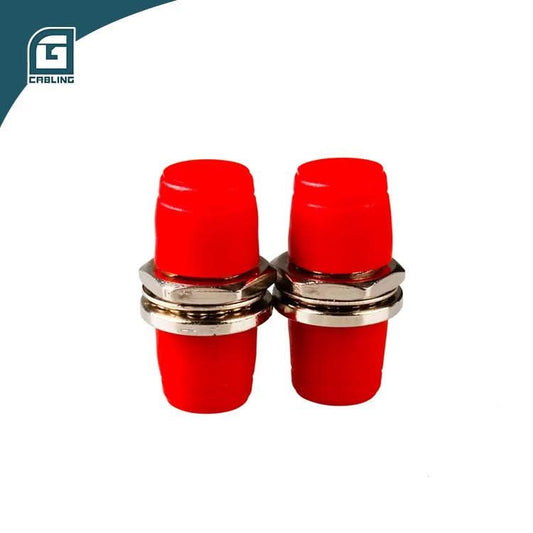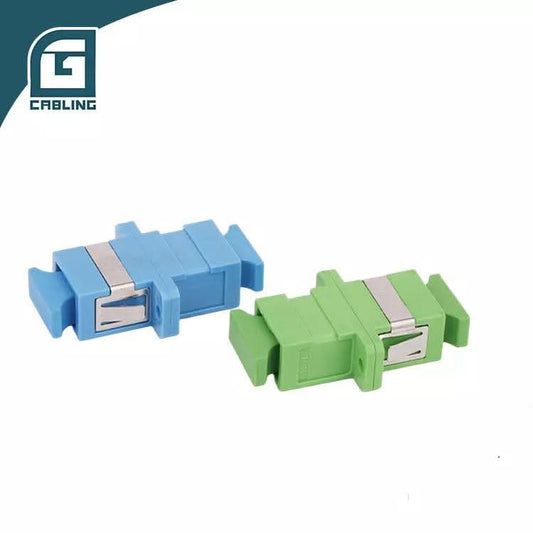Fiber Optic Adapter Complete Guide: ST, SC, LC, FC Connector Differences and Selection
In today’s digital age, high-speed and stable internet connectivity has become essential for businesses, data centers, and home networks. At the heart of this connectivity lies the fiber optic adapter, a small but powerful component that connects and aligns two fiber optic connectors. Whether you are installing a new system or upgrading existing infrastructure, understanding the types of fiber optic adapters such as ST, SC, LC, and FC can help you make informed choices and ensure optimal performance.
What Is a Fiber Optic Adapter?
A fiber optic adapter is a mechanical coupling device designed to join two fiber optic connectors together with high precision. It ensures low insertion loss and reliable alignment of the fiber cores, enabling smooth light transmission. Fiber optic adapters are widely used in patch panels, distribution frames, optical network terminals (ONT), and fiber-to-the-home (FTTH) projects.
- Providing secure mating between connectors
- Maintaining precise alignment of fiber cores
- Minimizing signal loss during transmission
- Supporting different connector types and polishing styles

Fiber Optic Adapter Types and Features
ST Fiber Optic Adapter
The ST fiber optic adapter (Straight Tip) uses a bayonet-style coupling mechanism, making it quick to install and remove.
- Features: Metal body, durable design, 2.5 mm ferrule
- Applications: Campus networks, legacy telecom systems, multimode fiber installations

SC Fiber Optic Adapter
The SC fiber optic adapter (Subscriber Connector) is popular due to its simple push-pull mechanism.
- Features: Square shape, 2.5 mm ferrule, easy insertion and removal
- Applications: Data centers, cable TV networks, GPON/EPON, enterprise systems

LC Fiber Optic Adapter
The LC fiber optic adapter (Lucent Connector) is compact and ideal for high-density applications.
- Features: Half the size of SC, 1.25 mm ferrule, latch-style mechanism
- Applications: High-density patch panels, FTTH, cloud computing facilities

FC Fiber Optic Adapter
The FC fiber optic adapter (Ferrule Connector) features a threaded coupling, ensuring stable connections.
- Features: Threaded design, 2.5 mm ferrule, high reliability
- Applications: Industrial environments, test equipment, long-distance single-mode networks

Differences Between ST, SC, LC, and FC Fiber Optic Adapters
While all these adapters connect fiber optic connectors, their design and applications vary:
- Coupling Mechanism: ST (bayonet), SC (push-pull), LC (latch), FC (threaded)
- Ferrule Size: ST/SC/FC (2.5 mm), LC (1.25 mm)
- Size and Density: LC is the most compact
- Application Environment: FC for vibration, LC for density, SC for telecom, ST for legacy
How to Choose the Right Fiber Optic Adapter
- Connector Type Compatibility (ST, SC, LC, FC)
- Mode Type (Single-mode or multimode)
- Polishing Style (PC, UPC, or APC)
- Application Environment (e.g., vibration → FC, high-density → LC)
- Durability & Material (ceramic sleeves recommended)
Applications of Fiber Optic Adapters in Data Centers and FTTH
The demand for fiber optic adapters has surged with 5G, IoT, and cloud computing. Key applications include:
- Data Centers: High-density LC adapters in patch panels
- Telecom Networks: SC and FC adapters in GPON/EPON
- FTTH: SC and LC adapters in wall outlets and fiber boxes
- Testing Equipment: FC adapters for optical testing
Conclusion: Best Practices for Selecting a Fiber Optic Adapter
The fiber optic adapter may be small, but it plays a crucial role in optical connectivity. By understanding the differences between ST, SC, LC, and FC adapters, engineers can make better decisions.
Key Takeaways:
- ST → Legacy & campus networks
- SC → Telecom & enterprise
- LC → High-density data centers
- FC → Industrial & vibration-prone areas




